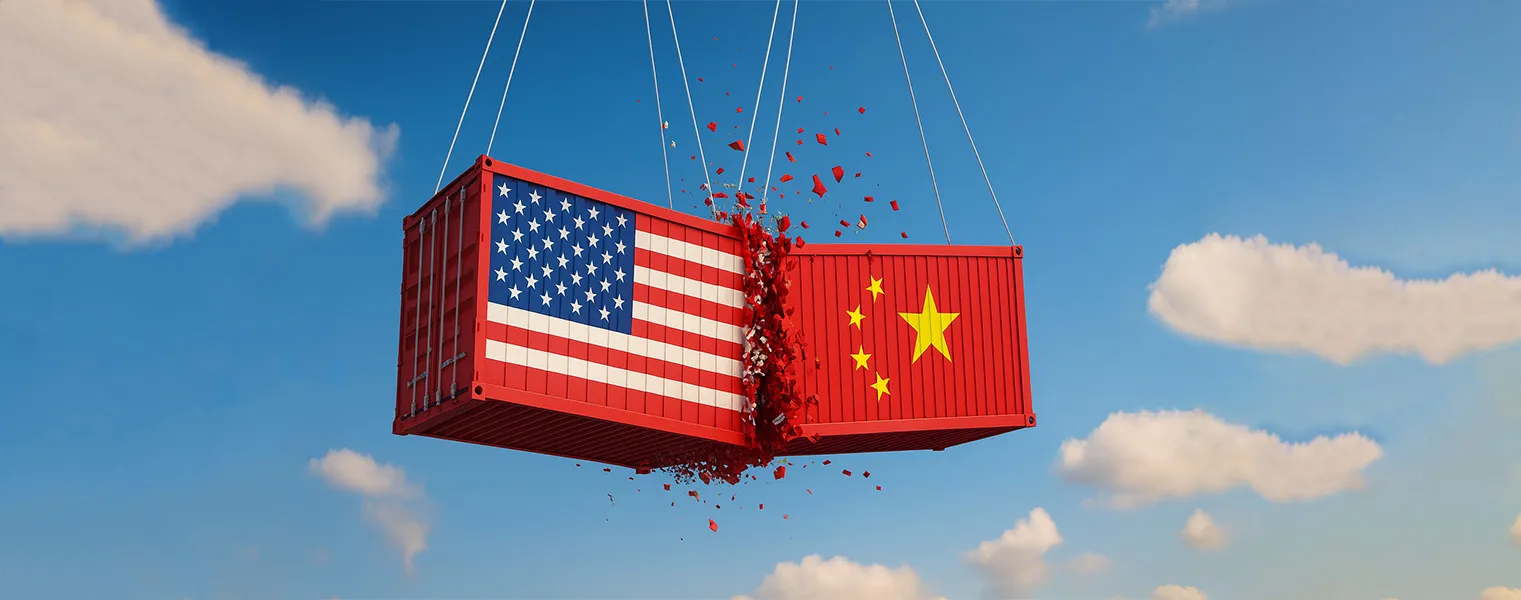US Pistachios Slump by 30%, Trade Barriers, High Iranian Exports and Turkish Turmoil: Can Europe Fill the Gap as China Turns to Iran?
In 2025, pistachios stand at the crossroads of record-breaking exports from Iran, deepening political uncertainties in Turkey, and looming U.S. tariff challenges. This dynamic creates a delicate balance of price fluctuations, shifting supply chains, and strategic responses from major growers around the world. Below is a comprehensive market update and analysis detailing production statuses, top exporters/importers, product quality and harvest timelines, current prices, and signals for the future. At the end, we include additional and complementary insights gleaned from the content provided.

1. Latest Market Updates & News
A. Iran: Pistachio Exports Reach Four-Year High
- Exports Surge
Iranian pistachios soared to a four-year high in the 2024/25 marketing season, with 105,035 MT shipped between October 2024 and February 2025—a near doubling over the same period last year. Iranian Pistachio Association (IPA) data attributes success to attractive pricing and shortfalls in other producing nations.
- Market Distribution
These shipments found receptive markets in Asia, parts of the Middle East, and new buyers in Europe. Exporters highlight Poland as an emerging surprise destination for Iranian pistachios.
- Shifting Dynamics
With global demand holding steady, Iranian suppliers believe that any drop in U.S. shipments—due to new tariffs—could further bolster Iran’s share, particularly in China.

B. Turkey: Farmers Hold Their Breath Amid Political and Weather Turmoil
- Political Chaos
Turkey’s domestic politics are overshadowing the pistachio sector. Heightened tensions—following the arrest of key opposition figure Ekrem İmamoğlu, government crackdowns, and looming economic instability—ripple through agriculture, undermining investor confidence and trade.
- Weather Worries
Beyond politics, frost poses immediate threats. Growers fear orchard damage in Southeastern Anatolia, a prime pistachio region. Some orchard expansions are on hold until the situation clarifies.
- Local Initiatives
Despite the strife, smaller-scale developments persist—like distributing 17,000 pistachio and bıttım saplings in Şırnak’s Cizre district. This signals Turkey’s long-term ambition to expand orchard area, aiming to become a stronger pistachio exporter once conditions stabilize.
C. U.S. Tariffs and Retaliation: A Threat to American Pistachio Exports
- Global Reactions
In early 2025, the U.S. imposed 25% tariffs on Canada and Mexico, plus a 10% on China, expanded to 20% on many Chinese goods. China, Canada, and Mexico collectively account for major shares in U.S. exports of tree nuts, including pistachios.
- China’s Shift to Iran
The Chinese market is increasingly turning to Iranian pistachios. While the U.S. remains a top pistachio supplier for in-shell nuts in China, Iranian (and sometimes Turkish) pistachios gain ground—especially for shelled nuts—when high tariffs reduce U.S. competitiveness.
- European Focus
U.S. suppliers seek to offset losses in Asia by expanding in Europe (e.g., Italy, Germany, Spain). EU demand for American pistachios remains robust, but the swirl of trade tensions complicates near-term shipping.
D. Market Recap: Price, Demand, and Political Clouds
Overall, strong consumer demand for pistachios persists, but the marketplace is fraught with new obstacles: uncertain orchard expansions, political disruptions, and cross-border tariff conflicts. Meanwhile, Iranian shippers celebrate one of their best seasons in years, while Turkish farmers watch orchard frost or political events that might hamper supply.
2. Global Production Status
- Iran
- With a bumper 2024/25 season, Iranian pistachio output is robust, possibly outpacing last year’s moderate harvest. The orchard sector has stabilized after better irrigation management.
- Iran stands to reclaim or expand its market share in Asia—particularly China—where Iranian pistachios enjoy strong brand recognition.
- Turkey
- Political disruptions overshadow orchard expansions. Southeastern Anatolia remains the heartland for Turkish pistachios, but orchard managers fear orchard damage from frosts.
- Smaller community-level expansions and sapling distributions show Turkey’s intent to remain a top-tier pistachio producer in the region.
- United States (California, Arizona, New Mexico)
- A consistent top global exporter, though current tariff wars hamper shipments to China and threaten potential retaliations from Canada or Mexico.
- Orchard expansions from previous years are maturing, ensuring stable supply, but trade friction might overshadow these gains.
- Kyrgyzstan, Chile, Australia
- Emerging or smaller producers: Kyrgyzstan unexpectedly posted new volumes to China in 2024, while Chile invests in orchard expansions to diversify. Australia also extends orchard areas, though overshadowed by bigger players.

3. Major Exporters & Importers of Pistachios
- Exporters:
- Iran—Historic top supplier, especially for premium varieties.
- United States—A close competitor, focusing on orchard expansions and advanced post-harvest processing.
- Turkey—Though overshadowed by domestic consumption, exports remain significant regionally.
- Importers:
- China: The biggest wildcard; shifting away from certain U.S. nuts due to tariffs, leaning on Iranian and domestic orchard expansions.
- EU: Italy, Germany, Spain, and others remain heavy buyers. If U.S. or Iranian supply proves cheaper or more reliable, they pivot quickly.
- Middle East: Strong domestic consumption in the region. Some countries re-export, capitalizing on logistic advantages.

4. Product Quality, Harvest Time & Key Considerations
- Harvest Timelines
- Iran: Typically around August–October. Favorable weather in 2024 led to good yields.
- Turkey: Usually mid–late summer. Frost concerns can hamper orchard yields if it hits post-bloom.
- USA: Harvest in early September–October. The orchard expansions from past years steadily mature, boosting yields.
- Quality Factors
- Kernel color and dryness. High-grade pistachios often prized for bright green kernels.
- Shell split ratio for in-shell variants.
- Pesticide or residue compliance remains crucial for EU or U.S. markets.
- Price Differentials
- Iranian pistachios can be cheaper than U.S. for some sizes, especially when U.S. faces tariffs.
- Turkish pistachios (like Antep variety) hold premium prices domestically and regionally, given unique flavor profiles.

5. Prices Now & Future Trends
A. Current Pricing
- Iranian Exports: Competitive and hitting a four-year high in volume. Market watchers note stable or slightly rising offers, spurred by strong demand.
- U.S. Pistachios: Facing downward price pressure if Chinese or other key markets impose retaliatory duties. Some orchard expansions might outpace short-term domestic or alternative export demand.
- Turkish Market: Domestic prices remain firm, factoring in orchard-level frost risk and political instability.
B. Reasoning Behind Price Fluctuations
- Tariffs: Ongoing tension with the U.S. has reoriented Chinese buyers to Iran or even Kyrgyzstan.
- Competition & Demand: Iranian “reasonable” prices matched with robust quality attract buyers in Asia/Europe.
- Weather & Production: Turkey’s frost concerns and orchard expansions in the U.S. create supply unpredictability, fueling potential volatility in global pricing.
C. Outlook & Signals
- Short-Term: So long as tariff disputes persist, Iran’s advantage in certain markets grows. Meanwhile, the U.S. focuses on building share in Europe.
- Mid-Term: If orchard expansions continue in the U.S. or new players (Kyrgyzstan, Australia) scale up, oversupply might appear unless global demand keeps pace. Political stabilization in Turkey could open new exports, or orchard frost might restrict them.
- Price: A mild upward trend expected globally if demand remains robust and trade friction doesn’t dissipate. Sudden breakthroughs in trade negotiations might re-lower U.S. prices, but few signs of that yet.

6. Export and Price Analysis & The Drivers
Why Are Some Countries Exporting Less or More?
- Iran: Exports soared to a four-year high (105,035 MT over five months) due to “competitive prices” and shortfalls elsewhere. Currency valuations and steady orchard expansions also help.
- U.S.: Exports are down around 30% yoy in some markets. Tariff woes, slower buying from China, and potential oversupply hamper short-term outlook.
- Turkey: Disturbances in orchard yield plus political upheaval reduce reliability. Farmers remain uncertain if orchard expansions can meet both local demand and export potential.
Reasons Behind the Lower or Higher Exports
- Cautious Buyers: After last year’s spikes, many big importers only buy what they need—especially for U.S. pistachios facing uncertain tariffs.
- Supply Chain Disruptions: Some small or mid-tier traders in Turkey or the U.S. faced bankruptcy last year, fragmenting distribution channels.
- Farmer Holding Back: With high prices and orchard expansions, some are storing kernels, anticipating possible further price upsides.
- Cash Flow: Doubling yoy prices in some markets means capital requirements soared, limiting immediate trades.

7. Additional & Complementary Updates & Information
After thoroughly reviewing all the provided data, here are extra insights not yet fully integrated:
- Argentine Attempt: Argentina is exploring pecan exports to China, but interest in pistachio expansions remains a question. This highlights how other nut sectors parallel pistachio dynamics.
- Branding & Marketing: Turkish “Antep fıstığı” sometimes sells at a premium in Middle Eastern markets due to taste preferences, overshadowed by orchard uncertainties.
- El Niño/La Niña: Although not heavily highlighted, any shift in global weather patterns can impact orchard yields across major pistachio-producing geographies.
- New Domestic Programs: For instance, in Turkey (Şırnak, Cizre district), distributing 17,000 pistachio saplings signals local expansions—part of a broader national strategy to bolster orchard coverage.
Conclusion
Pistachios remain a top commodity in 2025, with Iran celebrating surging exports, Turkey contending with political chaos and orchard frost, and the U.S. grappling with potential tariff retaliation in key overseas markets. Meanwhile, orchard expansions, stable end-user demand, and commodity-friendly prices maintain a bullish overall sentiment. Yet, watchers warn that if orchard expansions outpace demand or if major trade breakthroughs occur, the resulting corrections could cause significant volatility.
Key Observations:
- Iran: Four-year high exports at 105,035 MT within five months show strong competitiveness, especially in Asia.
- Turkey: Uncertain orchard yields plus a tense political climate hamper market. The short-term supply risk might prop up local or regional prices.
- U.S.: Tariff friction fosters potential declines in big markets like China. However, the U.S. is pivoting to Europe for stable demand.
- Prices: Likely to remain stable to rising unless demand ebbs or orchard expansions yield surpluses.
FAQ Section
- FAQ: Why Did Iran’s Pistachio Exports Surge to a Four-Year High in 2025?
- Competitive pricing, robust orchard production, and shortfalls in other major producing nations (like the U.S. facing tariffs) helped Iran reclaim or expand market share—particularly in Asia and parts of Europe.
- FAQ: How Is Political Instability in Turkey Affecting Pistachio Production?
- Tensions in Turkey—arrests, protests, and orchard-level frost—underscore big uncertainties. Farmers and traders are delaying orchard expansions and export deals until conditions stabilize, risking short-term supply constraints.
- FAQ: Are U.S. Pistachio Exports Truly Down 30% This Year?
- Yes. Trade data shows a ~30% yoy slump in major destinations, partly due to tariff friction and a slowdown of Chinese imports. Shippers pivot to the EU, hoping to offset losses in Asia.
- FAQ: What Are the Drivers Behind Rising Pistachio Prices?
- Factors include orchard yield shortfalls in certain regions, strong demand from Asia/EU, fear of new tariffs limiting supply, plus some orchard expansions not yet mature. Combined, these keep prices firm or rising.
- FAQ: Could Turkey’s Frost Issues Lead to a Price Spike?
- Potentially yes. If orchard damage is severe, local supply for Turkey’s domestic or export market might shrink, intensifying competition for available stocks—especially if Iranian or U.S. supply is also disrupted.
- FAQ: What Is the Long-Term Outlook for Pistachios?
- With stable or growing global demand and orchard expansions in multiple producing countries, the environment remains generally bullish. However, orchard expansions and possible trade normalization might eventually curb prices. For now, upward momentum continues.









